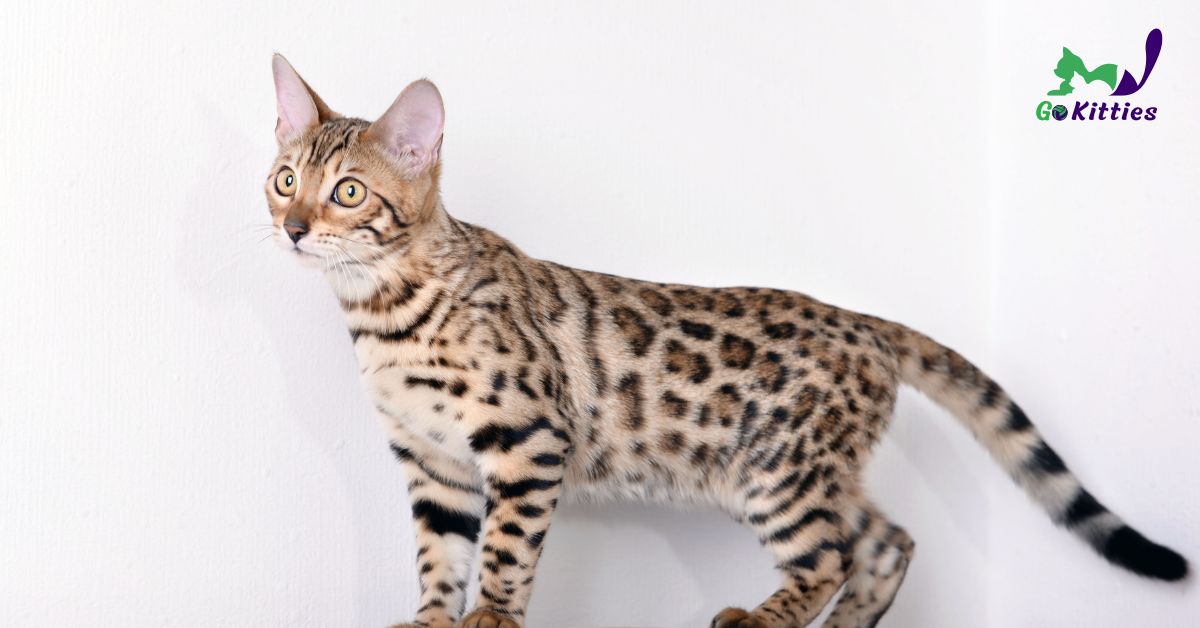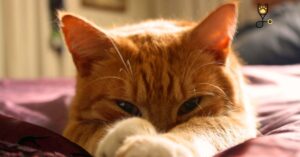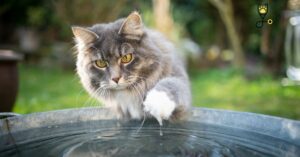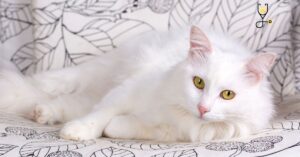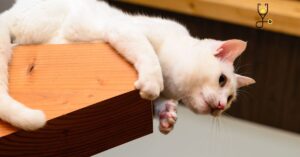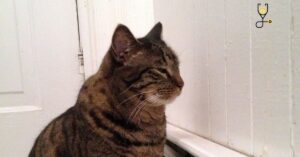If you’re a cat owner or considering becoming one, you may be wondering about Bengal cats. What are they like? How do you take care of them? What kind of personality do they have? This blog post is all about Bengals – what they are, where they come from, and some of the things that make them unique. So if you’re curious about these irresistibly playful felines, keep reading!
Characteristics And Breed Synopsis Of Bengal Cats
1. Bengal cats are a hybrid breed of domestic cats.
2. The Bengal cat is created by crossing a domestic feline with an Asian leopard cat.
3. Bengals have a coat that is typically brown or golden in color, with spots or rosettes all over their bodies.
4. Bengals are typically larger than other domestic cat breeds, with males weighing up to 15 pounds and females up to 12 pounds.
5. Bengals are known for their high energy levels and intelligence. They are often described as being dog-like in their behavior.
6. Bengals require more exercise than other domestic cat breeds, and they also need mental stimulation in the form of toys and puzzle feeders.
7. Bengals are typically good with children and other pets, although they may be too energetic for very young children.
8. Bengals are considered to be one of the most expensive cat breeds, with prices ranging from $1,000 to $4,000.
9. There are two different types of Bengal cats – standard Bengals and miniature Bengals. Standard Bengals are the more common type, while miniature Bengals are a newer development and are not yet recognized by all cat registries.
10. Miniature Bengals weigh between 4 and 8 pounds, while standard Bengals weigh between 10 and 15 pounds.
11. Miniature Bengals have all of the same characteristics as their standard-sized counterparts, but they are simply smaller in size.

The History Of Bengal Cats
- The Bengal cat is a relatively new breed, first appearing in the early 1980s. The breed was created by crossing a domestic cat with an Asian leopard cat. The goal of this cross was to create a domestic cat that resembled a wild leopard cat, but with a temperament that was more suitable for life as a house pet.
- The first generation of Bengal cats (known as F1 Bengals) was actually too wild to be good house pets, so they were not widely available. It wasn’t until the second generation of Bengals (F2) that the breed began to be more available to the public.
- Since then, Bengal cats have become increasingly popular, and they are now one of the most popular cat breeds in the world.
So, what makes the Bengals so special? Let’s take a look at some of their unique features.
Unique Features Of Bengal Cats
1. Their coat – Bengals have a coat that is typically brown or golden in color, with spots or rosettes all over their bodies. This coat is one of the things that makes them stand out from other domestic cat breeds.
2. Their size – Bengals are typically larger than other domestic cat breeds, with males weighing up to 15 pounds and females up to 12 pounds.
3. Their intelligence – Bengals are known for their high intelligence levels. They often learn tricks and commands quickly, and they excel at puzzle feeders and other forms of mental stimulation.
4. Their energy levels – Bengals have high energy levels and require more exercise than other domestic cat breeds. They love to play, and they are often described as being “dog-like” in their behavior.
5. Their temperament – Bengals are typically good with children and other pets, although they may be too energetic for very young children. They are also generally friendly towards strangers.
6. Their price tag – Bengals are considered to be one of the most expensive cat breeds, with prices ranging from $1,000 to $4,000.

Common Health Problems Of Bengal Cats
Unfortunately, like all breeds of cats, Bengals are susceptible to certain health problems. Some of the most common health problems seen in Bengals include:
1. Hip dysplasia – This is a condition that results in the abnormal development of the hip joint. It can cause pain and lameness, and it often requires surgery to correct.
2. Patellar luxation – This condition occurs when the kneecap (patella) becomes dislocated from its normal position. It can be painful and may require surgery to correct.
3. Respiratory problems – Because of their short noses, Bengals are prone to respiratory problems such as asthma and allergies.
4. Heart defects – Bengal cats are also susceptible to certain heart defects, such as congenital heart disease.
5. Kidney problems – Bengals are also at risk for certain kidney problems, such as renal dysplasia.

Caring For Your Bengal Cat
If you’re thinking about adding a Bengal cat to your family, there are a few things you need to know about their care and temperament. Here are some tips on how to care for your Bengal cat:
1. Provide plenty of exercises – As we mentioned before, Bengals have high energy levels and require more exercise than other domestic cat breeds. Be sure to provide plenty of toys and playtime to keep your Bengal happy and healthy.
2. Consider a puzzle feeder – Because of their intelligence, Bengals often get bored easily. A puzzle feeder can help to keep their minds challenged and engaged.
3. Be prepared for some shedding – Bengals shed more than other domestic cat breeds, so you’ll need to be prepared for some extra hair around the house. Be sure to brush them regularly to help reduce the amount of shedding.
4. Visit the vet regularly – As with all pets, it’s important to take your Bengal cat to the vet regularly for check-ups and vaccinations. Bengals are susceptible to certain health problems, so it’s important to catch any problems early.
5. Choose your breeder carefully – When choosing a Bengal cat breeder, be sure to do your research and choose a reputable breeder who can provide healthy kittens. Avoid buying Bengals from pet stores, as they are often sourced from mass-breeding facilities.

Feeding Tips For Bengal Cats
1. Bengals are carnivores and their diet should consist of mostly meat. Talk to your veterinarian about the best diet for your Bengal.
2. Because of their high energy levels, Bengals require more calories than other domestic cat breeds. Be sure to feed them a high-quality diet that is rich in protein and fat.
3. Bengals are also prone to obesity, so be sure to monitor their weight and feed them accordingly. Avoid giving them too many treats or table scraps.
4. It’s important to provide fresh, clean water for your Bengal at all times. Be sure to change their water daily and clean their water bowl regularly.
5. You may want to consider feeding your Bengal wet food instead of dry food. Wet food is higher in moisture and can help to keep your Bengal hydrated.
Where To Adopt And Buy A Bengal Cat?
If you’re looking to adopt a Bengal cat, your best bet is to contact a local Bengal cat rescue or breeder. There are many reputable Bengal cat breeders out there, so do your research before choosing one. Avoid buying Bengals from pet stores, as they are often sourced from mass-breeding facilities.

How To Manage the Pregnancy of a Bengal Cat?
1. If your Bengal cat is pregnant, be sure to provide her with a nutritionally complete diet. Talk to your veterinarian about the best food for your pregnant cat.
2. Provide plenty of fresh, clean water for your pregnant Bengal. Be sure to change their water daily and clean their water bowl regularly.
3. Pregnant Bengals should have access to a litter box at all times. Be sure to scoop the litter box daily and change it completely every week.
4. Avoid giving your pregnant Bengal any vaccinations during her pregnancy. Talk to your veterinarian about the best time to vaccinate your cat.
5. Be prepared for some behavioral changes during your Bengal’s pregnancy. She may become more affectionate or more aggressive. Be sure to provide her with plenty of love and attention.
Play And Exercise Tips For Bengal Cats
1. Bengals are high-energy cats and require more exercise than other domestic cat breeds. Be sure to provide plenty of toys and playtime to keep your Bengal happy and healthy.
2. Consider a puzzle feeder – Because of their intelligence, Bengals often get bored easily. A puzzle feeder can help to keep their minds challenged and engaged.
3. Bengals love to climb, so be sure to provide them with plenty of vertical space. Cat trees or shelves are a great way to give your Bengal a place to explore.
4. Be prepared for some shedding – Bengals shed more than other domestic cat breeds, so you’ll need to be prepared for some extra hair around the house. Be sure to brush them regularly to help reduce the amount of shedding.
5. Bengals are also known for being vocal cats. Be prepared for some meowing, chirping, and other noises coming from your Bengal.
Conclusion
Bengal cats are a unique and beautiful breed of cat. They are very intelligent and active and require more exercise than other domestic cat breeds. If you’re thinking about adding a Bengal to your family, be sure to do your research and choose a reputable breeder. Bengals make great companion animals and can provide years of enjoyment for their owners. Thanks for reading!
Frequently Asked Questions About Bengal Cats
1. What is the difference between a Bengal cat and a regular domestic cat?
Bengal cats are a unique breed of cat that is characterized by their wild appearance. They are often mistaken for wild cats, but they are actually domestic cats that have been bred to resemble their wild cousins. Bengals are usually larger than other domestic cat breeds and have shorter fur. They also have distinctive markings on their coats that resemble those of a leopard or jaguar.
2. Where do Bengal cats come from?
Bengal cats were first developed in the 1960s by Dr. Willard Centerwall. He bred an Asian Leopard Cat with a domestic cat in order to create a new breed of cat that resembled a leopard. The Bengal breed was officially recognized by the International Cat Association in 1983.
3. Do Bengal cats make good pets?
Bengal cats can make great companion animals for the right owner. They are very active and require more exercise than other domestic cat breeds. Bengals are also very intelligent and can be trained to do tricks and behaviors. If you’re thinking about adding a Bengal to your family, be sure to do your research and choose a reputable breeder.
4. How much do Bengal cats cost?
The price of a Bengal cat can vary depending on the breeder and the individual cat’s characteristics. Expect to pay anywhere from $600-$1,500 for a Bengal kitten from a reputable breeder. Bengals that are bred for show quality or that have unique markings may cost more.
5. Are Bengal cats hypoallergenic?
There is no such thing as a truly hypoallergenic cat, but some breeds are less likely to cause an allergic reaction in people who are allergic to cats. Bengals are not considered to be a hypoallergenic breed, but they do produce less of the protein that is responsible for causing allergies in some people.

